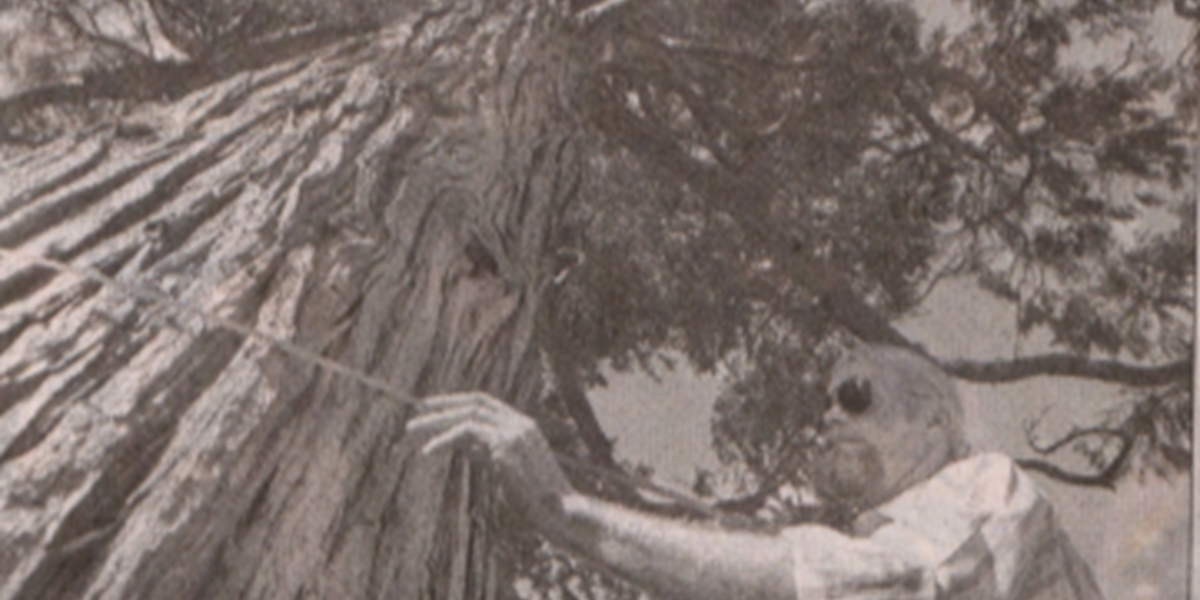

Published September 18, 2006 By ALLEN HOUSTON
Detailed survey of species, conditions is start of push for a greener, shadier Dallas.
Dallas' concrete jungle turns many residents green with envy for cities with more trees and nature.
But Dallas, with its endless highways and strip malls, has rooted itself in a n effort to bury its reputation for cold steel and glass.
In short, the city wants to become a tree hugger.
In December, the City Council created the Urban Forest Advisory Committee (UFAC). In August, it hired Walter Passmore as the city's first urban forester. Now, the advisory committee is raising funds for a major initiative: an inventory of all city trees, public and private. The tree census, expected to start in January, could cost up to $1 million.
The moves signal a cultural shift in a city not known for promoting an eco-friendly scene. They may also bring Dallas up to speed with cities such as Fort Worth and Houston.
Compared to other large cities we've been in the stone ages when it comes to how we take care of our trees, but we're finally starting to catch up," said Steve Houser, chairman of the advisory committee.
The region surrounding Houston completed its first tree inventory two years ago, tallying 663 million trees whose replacement costs was valued at more than $205 billion. Fort Worth and Austin have done similar surveys.
Dallas' tree inventory would document the varieties of trees and their conditions. It would also identify areas needing trees and what varieties have been over-planted.
"Trees should be considered part of the infrastructure in the same way as our streets and sewers," said Michael Hellman, a park planner with the Dallas Park and Recreation Department. "When managed properly, a tree's value increases in time. No other city infrastructure does that."
Mr. Houser, an arborist, has been a tree advocate in Dallas for more than a decade.
Shift in Attitudes
"Five years ago, if I were to have approached council and talked to them about hiring an urban forester and performing a tree inventory, they would have laughed in my face," he said. "The philosophy was the 'We're pro-development and we don't want anything to do with trees.'"
Bill Seaman, horticulturalist and advisory committee member, said that in the past, a disconnect existed locally regarding trees' benefits.
"Ten years ago, the main perception was that trees only served an aesthetic purpose," Mr. Seaman said. "Now we're more aware of the many positive effects that they have on air quality, our health, keeping our city cooler and the bottom line of economics in the city."
Mayor Laura Miller has been promoting tree efforts since her days representing Oak Cliff on the City Council.
"There's been a huge shift in how the city of Dallas perceives trees," Ms. Miller said. "In the past we thought nothing about destroying trees in the name of economic development.
Other Cities' Progress
Some large cities have surpassed Dallas on the forestry front.
Fort Worth hired its first urban forester in the 1920's, and its first city charter included an ordinance forbidding hitching a horse to a public tree, said Melinda Adams, Fort Worth's city forester.
Fort Worth's Urban Forestry program has a neighborhood tree planting program, a tree farm and a citizen forestry program, and it trains city crews on how to properly maintain public trees.
"People are just now beginning to see the big picture with climate changes, and it's only going to become more profound as time passes," Mrs. Adams said. "Our city urban forestry programs will become even more important."
Managing Dallas' trees has fallen to Mr. Passmore, who just moved to the city after 14 years as a community assistant forester in Mississippi.
Dallas received funds to hire an urban forester with a National Forest Service grant and will pay the rest of his salary from park department funds. For now, Mr. Passmore, with no dedicated staff and no budget, will try to establish an urban forest department.
"The big challenge is making residents understand how significant the tree resources in the city are and how to utilize them best for us," he said. "There's 364 square miles of land for us to manage. That provides us with huge opportunities."
The city will use satellite technology to count trees and determine their species. In heavily urban sections, volunteers will drive city streets and alleys with handheld computers to input data.
To speed up the count, Mr. Houser wants to start a citizen forester program that would educate residents on forestry in return for helping with the surveys.
The Houston-area tree inventory used GPS technology and volunteers. The city has started a second, more comprehensive examination of neighborhood trees.
"Before the first inventory, everything we did was on a reactive basis," said Victor Cordova, Houston's city forester. "Now we know which trees are likely to fall over, we know which ones are dead, we know which areas need more trees."
As Dallas moves forward, Mr. Houser believes the city has finally decided it wants a greener identity.
"I'm seeing council members who finally want to do more than leave concrete and strip malls," he said. "The current city officials seem like they are interested in leaving a living legacy for their children."
Ms. Miller is one of those officials embracing trees. She started climbing trees with Mr. Houser four years ago and has even entered a couple of tree-climbing competitions.
She recalled when she and Mr. Houser climbed a large tree over White Rock Lake last winter.
"It was quite magical," she said. "We sat in a tree overlooking out over the lake. It gives you quite a different perspective about things."
